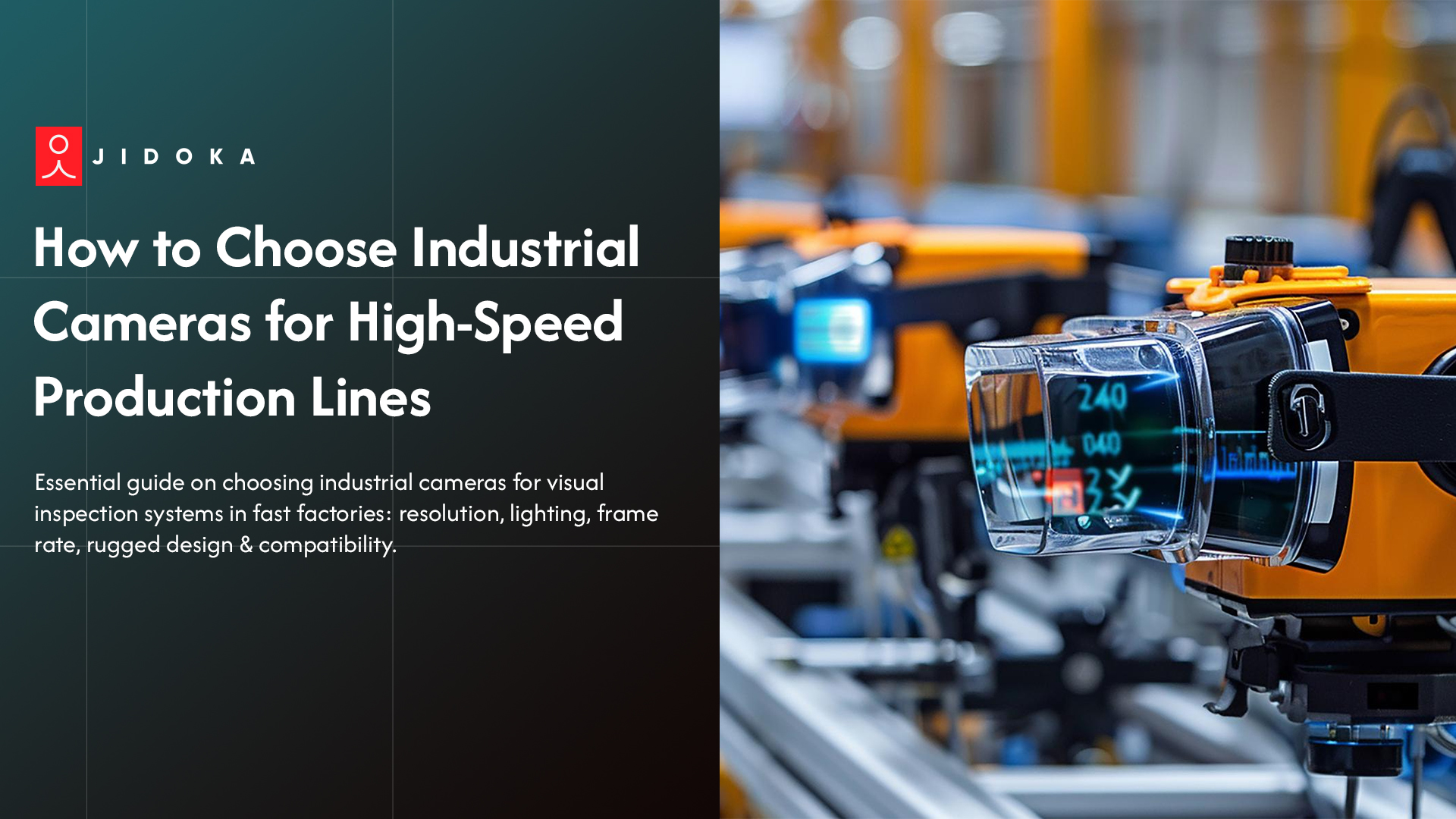A loose, cracked, or misapplied cap is a direct threat to your product, brand, and bottom line. Packaging failures in the high-speed U.S. FMCG market lead to expensive recalls. As the industry moves into 2025, new trends like lightweighted and tethered caps introduce new, complex defect risks.
Manual spot-checks are obsolete. They cannot catch a cross-threaded cap at 1,200 bottles per minute. This is where automated bottle cap inspection becomes a non-negotiable part of your line.
This guide covers the process and tech you need for 100% cap seal integrity. This level of automated quality control and FMCG packaging inspection protects your brand. This guide covers bottle cap inspection from start to finish.
Why Bottle Cap Inspection is a Critical Control Point in FMCG Packaging Inspection
Bottle cap inspection is an automated machine vision process that scans every single cap and closure on your production line. This check goes beyond simple presence. It confirms correct placement, structural integrity, and the right cap type, which ensures cap seal integrity.
For any FMCG packaging inspection plan, the cap is a primary Critical Control Point (CCP). This is a non-negotiable "go/no-go" step. A failure here leads to serious, costly issues:
- Product Spoilage: An improper seal allows oxygen or contaminants in, ruining the product.
- Costly Leaks: Leaks during shipping damage other products and lead to retailer chargebacks.
- Regulatory Fines: A failed seal can be a compliance violation, leading to fines.
- Contamination: A bad seal can allow bacteria or other contaminants to enter the product before it reaches the consumer.
In today's world, one viral photo of a leaking or tampered-with product destroys consumer trust instantly. This simple bottle cap inspection is a primary defense for your brand's reputation. It is a core part of any modern automated quality control system and the best way to guarantee your bottle cap inspection process is effective.
A single bad cap can cause many different problems. So, what specific failures does a good vision inspection system look for?
Top 5 Defects an Automated System Catches
A modern vision inspection system looks for multiple failure points simultaneously in milliseconds. Relying on human inspection guarantees these "Fatal Five" defects will eventually reach your customers. A proper bottle cap inspection setup finds them all.
1. High, Low, or Skewed (Cross-Threaded) Caps
This is the most common defect, often caused by capper misalignment. A skewed or "high" cap means an improper seal, which guarantees leaks. A "low" cap can indicate over-torquing. This is a failure of skewed cap detection and ruins cap seal integrity. This is a primary goal of bottle cap inspection.
2. Tamper-Evident Band Integrity
The system checks for broken, missing, "cocked" (partially detached), or improperly formed tamper-evident rings. It also detects "dropped" bands. A faulty band means your product's safety is compromised. This is a critical tamper band inspection.
3. Surface Defects and Damage
The system identifies dents, scratches, cracks, or "short shots" (molding errors) on the cap surface. It also catches aesthetic issues like "black specks." A complete bottle cap inspection finds these physical damages.
4. Incorrect Cap: Color, Logo, or Type
It ensures the correct cap (matching color, branding, and type) is on the correct product. This is critical for preventing massive product mix-ups. This check is a key part of any FMCG packaging inspection plan.
5. Seal Contamination
The system detects product residue (like liquid or powder) on the sealing surface before cap application. It also checks for foil fragments or product splash on the threads. Any of these would prevent a proper, hermetic seal. This final check is what makes bottle cap inspection so effective.
Catching these defects requires lightning-fast, systematic processes. So, how does the technology manage all these checks during high-speed bottle inspection?
The 4-Step High-Speed Bottle Cap Inspection Process
The system handles this complexity with a seamless, four-step operation. It's how modern high-speed bottle inspection works.
Step 1: 360° Image Capture
As the bottle passes the inspection station, a sensor triggers multiple high-resolution cameras. This array, often including side-mounted and top-down cameras, captures a complete 360-degree view of the cap and neck area.
These systems use specialized diffused lighting to prevent glare from the cap, ensuring a clear image for analysis. This capture is the first part of a successful bottle cap inspection.
Step 2: AI-Powered Defect Analysis
In less than a millisecond, AI-powered software analyzes the captured images. Unlike older, rigid rule-based vision, modern AI models are trained on thousands of "good" and "bad" examples.
The software measures cap height, checks the angle for skewed cap detection, and inspects the tamper band for any gaps or breaks. This is the "brain" of the vision inspection system.
Step 3: Code Verification with OCR for Packaging
Simultaneously, the top-down camera uses OCR for packaging (Optical Character Recognition). This technology is essential for FMCG quality control and traceability.
- It instantly reads any lot codes, batch numbers, or expiry dates printed on the cap.
- It verifies this data is correct, present, and legible (not smudged or incomplete).
- This step is absolutely required for modern packaging traceability regulations.
Step 4: Automatic Ejection
If any single parameter fails, from a 1-degree skew to a smudged date code, the system sends an electrical signal to an automated rejector. This device, often a high-speed pneumatic air-jet or a pusher arm, removes the faulty bottle from the line without ever stopping production. This immediate action completes the bottle cap inspection loop.
This process works best when you follow a few key strategies for placement and operation.
Best Practices for a Bulletproof Cap Inspection Strategy
Buying a system is the first step. Getting the most from your bottle cap inspection requires a smart setup.
1. Combine Inspection Tasks
The most efficient solution is to use a single, integrated station. This setup can check bottle fill level inspection, cap seal integrity, and label placement at the same time. This "all-in-one" station reduces the line's physical footprint and simplifies maintenance. It makes your whole FMCG packaging inspection process simpler.
2. Use AI to Reduce False Positives
Don't let your system stop the line for a minor water droplet. This is a huge advantage of AI for bottle cap inspection. Deep learning algorithms train your system to distinguish between actual defects (like a crack) and acceptable cosmetic variations (like a tiny molding mark). This improves your automated quality control by maximizing uptime.
3. Position Inspection After the Torquer & Induction Sealer
Always inspect the final sealed product. Place your vision inspection system after the cap has been fully torqued. If you use an induction sealer, place the inspection after it activates the inner foil seal. This "final check" in your bottle cap inspection process verifies that both the capping and sealing processes were 100% successful.
Following these practices makes your system robust, but the specific technology provider you choose also matters.
How Jidoka Tech Secures Your Seal and Your Brand
Choosing the right partner is key. At Jidoka Tech, we deliver AI-powered vision inspection systems built for the demanding speeds of U.S. FMCG production. Our systems provide a comprehensive bottle cap inspection that protects your brand and ensures cap seal integrity.
- We verify cap height, skew, and tamper band inspection integrity.
- We perform simultaneous OCR for packaging to validate every code.
- We consolidate your FMCG packaging inspection into one intelligent station.
We give you 100% automated quality control and protect your brand from packaging recalls. With 48+ trusted customers worldwide and 100+ successful implementations, our systems deliver real-world results for bottle cap inspection.
See how our bottle cap inspection solutions can help your line → Jidoka
Conclusion
A high cap, a skewed thread, or a broken tamper band can seem like small, random errors. But these are the exact issues that shut down production lines. These tiny defects are easy to miss, but they are the direct cause of the biggest disasters in FMCG packaging inspection.
A single missed bad cap leads to product spoilage, contamination, and costly leaks. This is how multi-million dollar recalls begin. A single recall can destroy consumer trust in your brand overnight.
In 2025, leaving this to chance is not an option. Jidoka's automated quality control systems provide the solution. Our AI-powered vision inspection systems for bottle cap inspection catch 100% of these errors.
Connect to Jidoka today to secure your bottle cap inspection line and protect your brand.
FAQs
1. What is a "skewed cap" or "cross-thread"?
A skewed cap is a critical defect where the cap isn't threaded correctly. This is a primary target for skewed cap detection during bottle cap inspection. An effective vision inspection system catches this failure because it directly ruins cap seal integrity, leading to costly leaks, spoilage, and brand damage.
2. Why is tamper band inspection important?
A tamper band inspection is a key part of FMCG quality control. It provides visual proof to consumers that the product is safe and unopened. A broken or missing band suggests tampering. This check is a vital component of automated quality control and a standard feature in bottle cap inspection systems.
3. Can one system inspect the cap, fill level, and label?
Absolutely. Modern vision inspection systems are designed to consolidate tasks. They use a single station with multiple cameras. This allows them to perform bottle fill level inspection, check cap seal integrity, and verify labels simultaneously. This integration is essential for efficient high-speed bottle inspection and complete FMCG packaging inspection.
4. How fast is automated bottle cap inspection?
Yes, speed is their specialty. These vision inspection systems are engineered for high-speed bottle inspection lines. They provide 100% automated quality control at speeds of hundreds or even thousands of bottles per minute. This high-speed cap and closure inspection happens in real-time without slowing down your production line at all.
5. What does OCR do on a bottle cap?
OCR for packaging stands for Optical Character Recognition. On a bottle cap inspection system, it reads and verifies printed text like expiry dates and lot codes. This is not just a quality check; it is a critical part of FMCG quality control and ensures full compliance with modern packaging traceability regulations.
%20Bottle%20Cap%20Inspection_%20Guide%2C%20Step%20%26%20All%20Best%20Practices.jpg)







